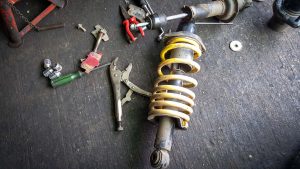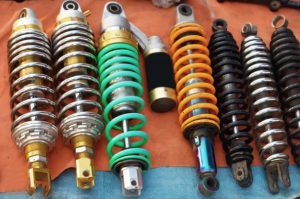Suspension springs are a vital component of your car’s suspension system, responsible for absorbing shocks, maintaining proper ride height, and ensuring a comfortable and stable driving experience. Over time, these springs can wear out, lose tension, or suffer damage. This raises a common question for car owners and mechanics: Can you reuse old suspension springs, or is it safer to replace them entirely?
In this article, we’ll explore the factors that determine whether old springs can be reused, the risks involved, and the best practices for replacing or refurbishing them.

Understanding the Role of Suspension Springs
Suspension springs work alongside shock absorbers to keep the tires in contact with the road surface. They:
-
Support the vehicle’s weight
-
Absorb road irregularities
-
Maintain consistent ride height
-
Improve stability during turns and braking
Springs are made from high-strength steel and are designed to withstand thousands of compression cycles. However, they are not immune to wear and fatigue.
Can You Reuse Old Suspension Springs?
The short answer: Yes, but only in certain cases.
If the springs are in good condition — with no cracks, rust damage, or significant sagging — they can often be reused, especially if they’re from a high-quality OEM set. However, older springs may have weakened over time, leading to:
-
Reduced ride height
-
Uneven handling
-
Increased strain on suspension components
Factors to Consider Before Reusing
| Factor | Safe to Reuse? | When to Replace |
|---|---|---|
| Age | Less than 5–7 years | Over 8–10 years old |
| Rust | Light surface rust | Deep pitting or structural rust |
| Sagging | No noticeable drop | Visible drop in ride height |
| Cracks | None | Any cracks or fractures |
| Performance | Still holds ride height and comfort | Noticeable bounce or instability |
Signs Your Springs Need Replacement
Here are common indicators that reusing springs is not advisable:
-
Visible sagging: Car sits lower than normal, especially on one side.
-
Unusual noises: Clunking or creaking when going over bumps.
-
Uneven tire wear: Poor suspension alignment due to spring sag.
-
Poor handling: Increased body roll, instability during braking.
-
Corrosion damage: Severe rust that compromises metal strength.
Refurbishing Old Springs
In some cases, springs can be refurbished if they are structurally sound. Refurbishing might include:
-
Cleaning and removing surface rust
-
Applying anti-rust coating or paint
-
Re-tempering to restore strength (requires specialized equipment)
However, re-tempering is not always cost-effective compared to buying new springs. Refurbishing also won’t reverse years of fatigue in the steel.
Best Practices for Suspension Spring Maintenance

To extend the life of your springs — whether reused or new — follow these tips:
Do:
-
Inspect springs at every major service interval.
-
Wash the undercarriage in winter to remove salt and prevent rust.
-
Replace springs in pairs (front or rear) to maintain balance.
Don’t:
-
Ignore noises or changes in ride height.
-
Install mismatched springs.
-
Overload your vehicle beyond manufacturer specs.
Replacement vs. Reuse: Quick Decision Guide
| Situation | Recommended Action |
|---|---|
| Minor surface rust, no sag | Reuse after cleaning and coating |
| Moderate rust, uneven height | Replace |
| Cracks or broken coil | Replace immediately |
| Springs older than 10 years | Replace as preventative measure |
Final Thoughts
Reusing old suspension springs is possible only if they are in excellent condition, with no signs of significant wear or damage. While refurbishment can extend their lifespan, in many cases replacing them is the safer and more cost-effective choice.
If you’re unsure, always consult a mechanic or suspension specialist — faulty springs can compromise handling and safety.
When it’s time for an upgrade, you can Buy Springs & Components online to ensure you get reliable, high-quality parts that restore your car’s comfort and performance.